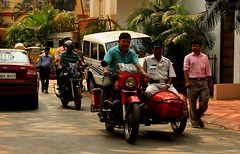
Last week millions of Hindu women proudly celebrated a festival whose fundamental tenet is misogynistic. This is the festival of Karva Chauth. Women deprive themselves of food and water all day, and after sunset break their fast after they’ve viewed the moon through a kitchen sieve. They’ve been told that if they do this, the gods will ensure long lives for their husbands. In a country where every year, more than a 100,000 married women are murdered for dowry — burnt, hung, stabbed, poisoned, drowned, or driven to suicide — by their husbands and in-laws, and not a day goes by without media reports of such deaths, this womanly fixation on ensuring a long life for the husband seems sort of bizarre. But there is a cultural explanation for Indian women’s fixation on their husbands’ long lives….
READ THE FULL ARTICLE HERE http://www.huffingtonpost.in/rita-banerji-/karva-chauth-a-womanly-ce_b_8429386.html










![earth-day-and-kids1[2]](https://ritabanerjisblog.files.wordpress.com/2011/11/earth-day-and-kids12.jpg?w=600)





